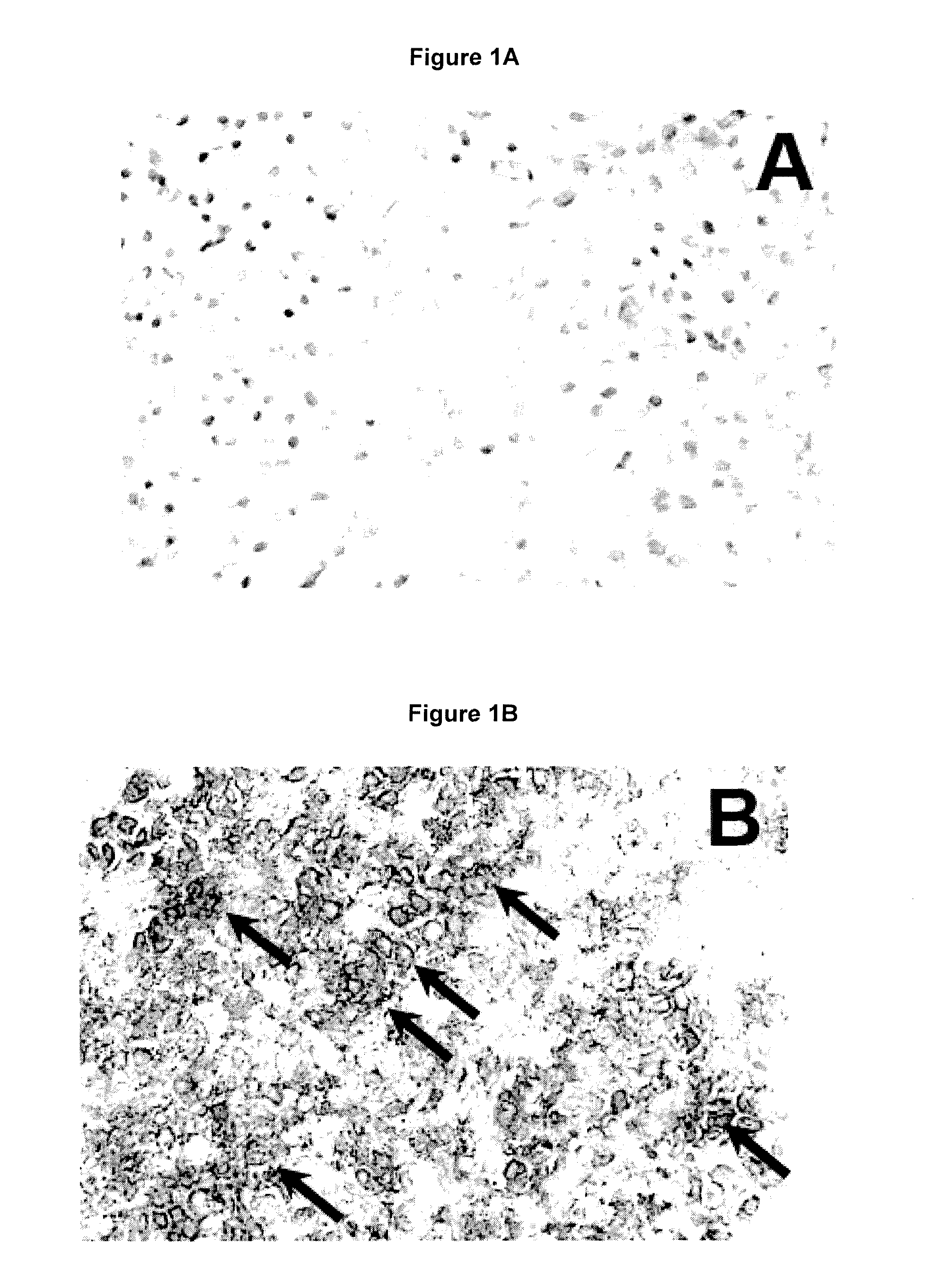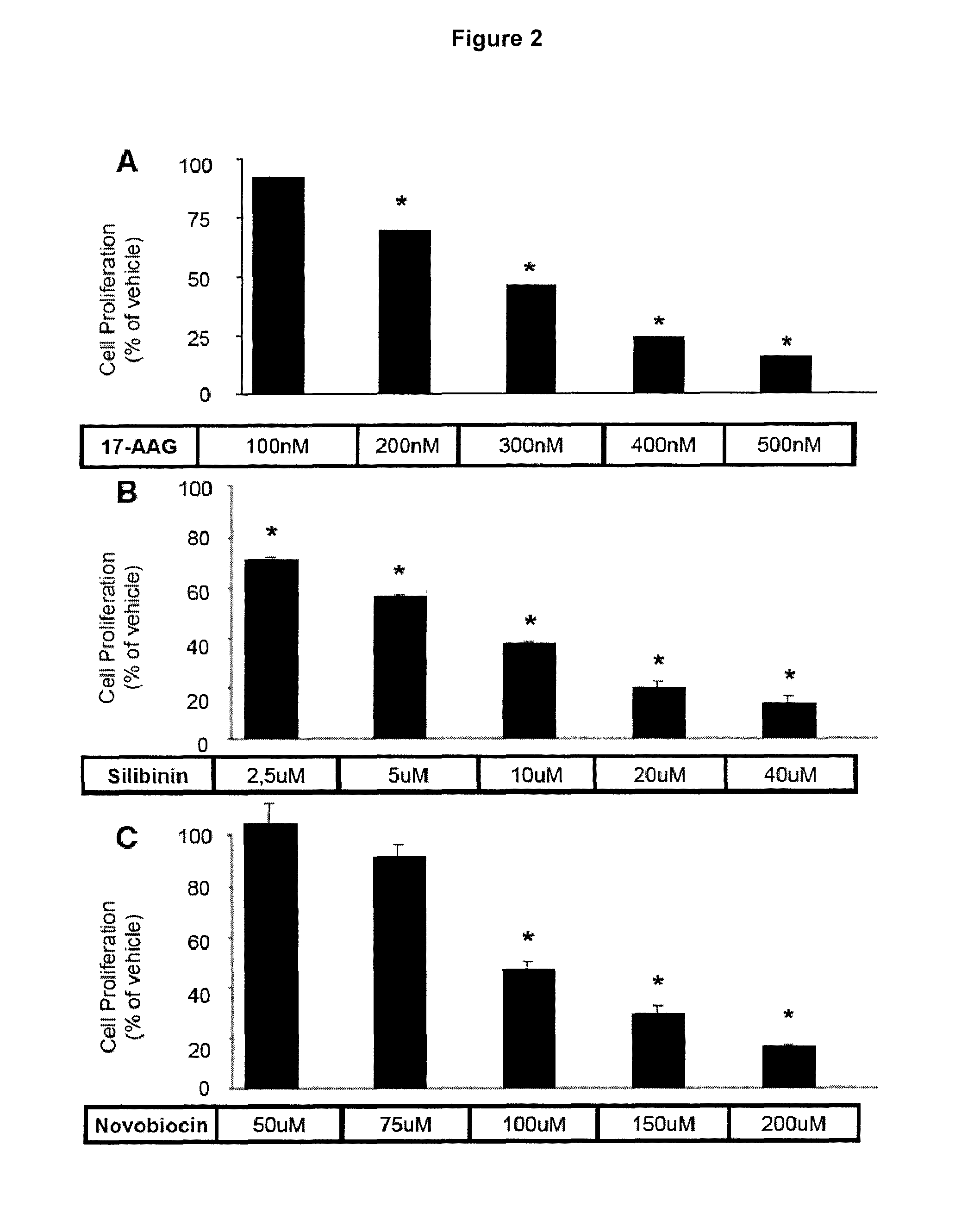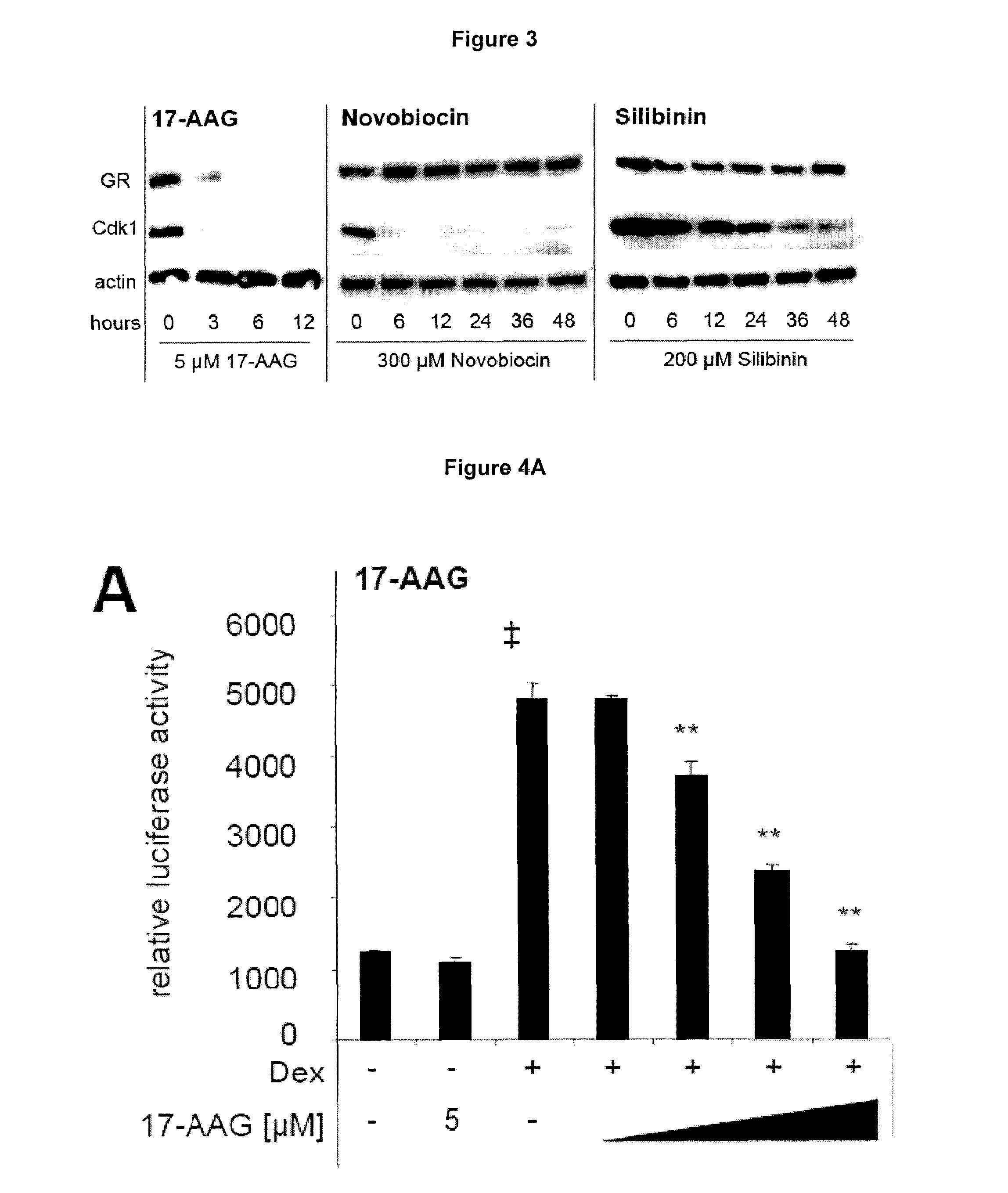C-terminal hsp90 inhibitors to treat pituitary adenomas
a technology of c-terminal hsp90 and inhibitors, which is applied in the direction of biocide, drug composition, peptide/protein ingredients, etc., can solve the problems of visual field defects, headaches, and increased intracranial pressure, and achieve the effects of improving the sense of smell, and improving the effect of hsp90 inhibitors
- Summary
- Abstract
- Description
- Claims
- Application Information
AI Technical Summary
Benefits of technology
Problems solved by technology
Method used
Image
Examples
example 01
[0100]The immunohistochemical detection of HSP90 was performed with the streptavidin-biotin-peroxidase complex method on normal human pituitaries taken from autopsy samples of healthy subjects after accidental death and on tumor biopsies taken during trans-sphenoidal surgery from patients with Cushing's disease. The tissue samples were immediately frozen on dry ice and cut into histological sections. After hydration, primary antibodies directed against HSP90-alpha (Epitomics) were applied to the sections in a dilution 1:200. Then, the sections were washed and a secondary, anti-rabbit biotinylated antibody was applied. The antibodies were visualized with the ABC-complex and 3,3′-diaminobenzidine, producing a brown color. The slides were counterstained with toluidine-blue to visualize the cell nuclei.
example 02
Proliferation Assay (WST-1 Assay)
[0101]Cell proliferation was measured with the WST-1 proliferation assay (Roche Applied Science). This assay measures the activity of the mitochondrial succinate dehydrogenase. After 4 days of treatment with different HSP90 inhibitors, the WST-1 reagent was added to AtT-20 cell cultures in 96-well plates to a final dilution of 1:10. The cells were incubated for 2 hours and then the absorbance of the reaction product was measured with an ELISA reader at 440 nm, following the manufacturer's instructions.
example 03
Western Blot—Evaluation of the Induction of GR Degradation
[0102]AtT-20 cells in 6-well plates were treated with different HSP90 inhibitors for the times indicated in each experiment. At the end of the treatment, cell lysates were prepared in lysis buffer supplemented with protease and phosphatase inhibitor cocktail (Roche). Samples of the lysates were separated by PAGE and blotted onto membranes using standard western blot procedures with gels and buffers from Invitrogen. After blocking the membranes with 5% non-fat dry milk, primary antibodies against GR (H-300, Santa Cruz), Cdk1 (BD Transduction Laboratories), and actin (Cell Signalling) were added. Anti-mouse and anti-rabbit horseradish peroxidase-conjugated secondary antibodies were used to detect the primary antibodies. The detection was carried out using Lumilight (Roche) or ECL-Plus (Thermo Scientific).
PUM
| Property | Measurement | Unit |
|---|---|---|
| pressure | aaaaa | aaaaa |
| stress | aaaaa | aaaaa |
| temperatures | aaaaa | aaaaa |
Abstract
Description
Claims
Application Information
 Login to View More
Login to View More - R&D
- Intellectual Property
- Life Sciences
- Materials
- Tech Scout
- Unparalleled Data Quality
- Higher Quality Content
- 60% Fewer Hallucinations
Browse by: Latest US Patents, China's latest patents, Technical Efficacy Thesaurus, Application Domain, Technology Topic, Popular Technical Reports.
© 2025 PatSnap. All rights reserved.Legal|Privacy policy|Modern Slavery Act Transparency Statement|Sitemap|About US| Contact US: help@patsnap.com



